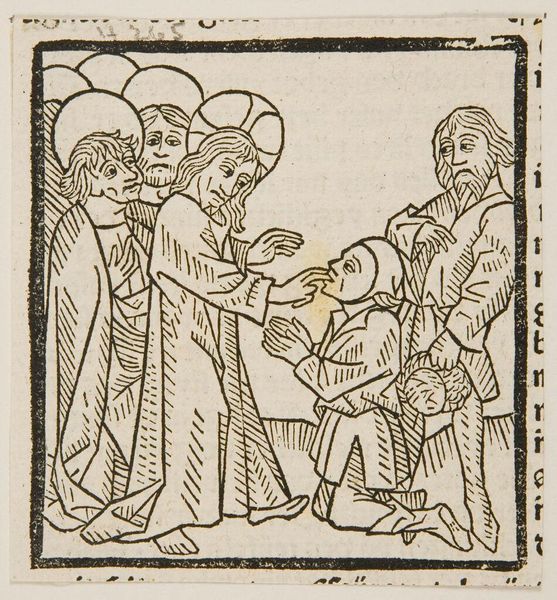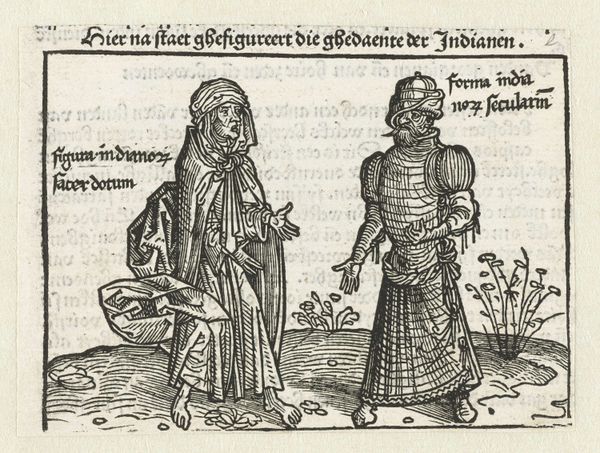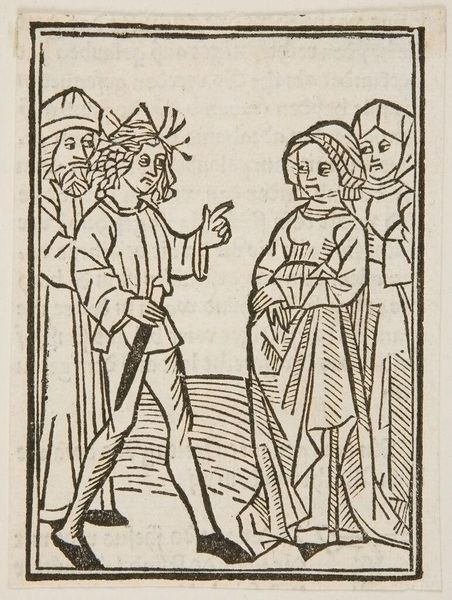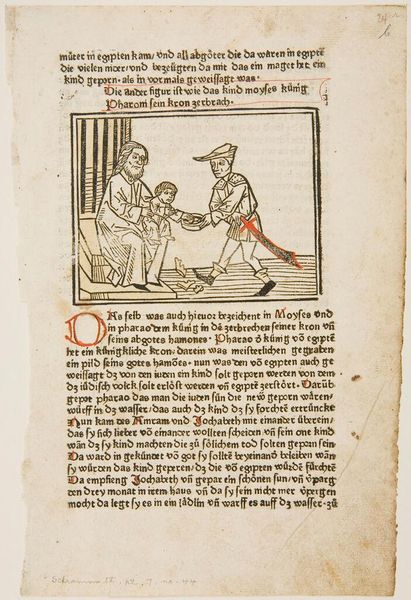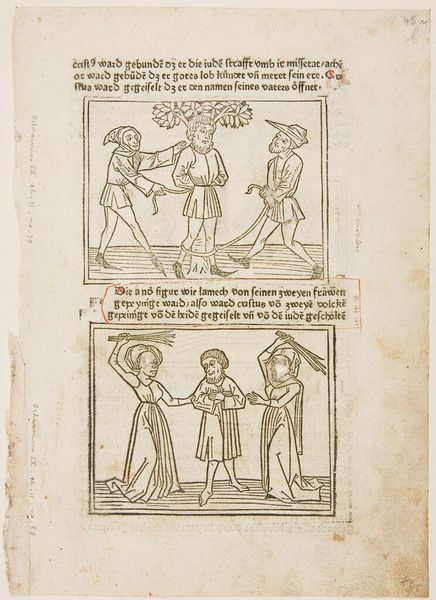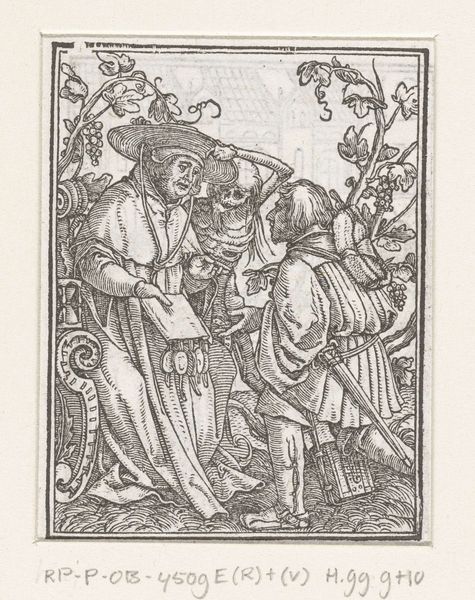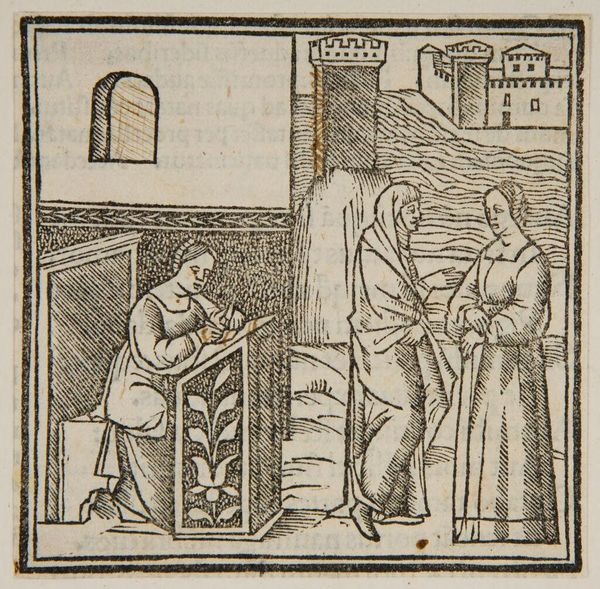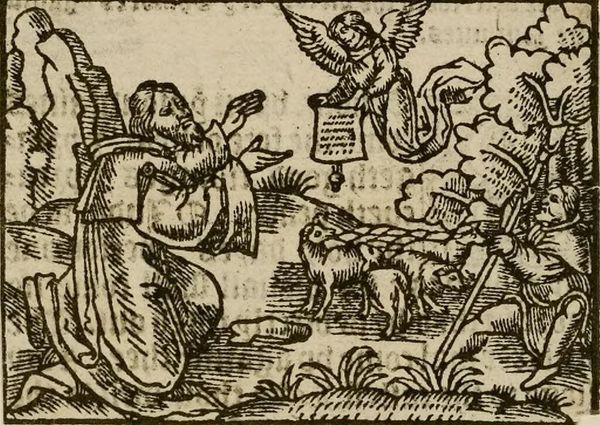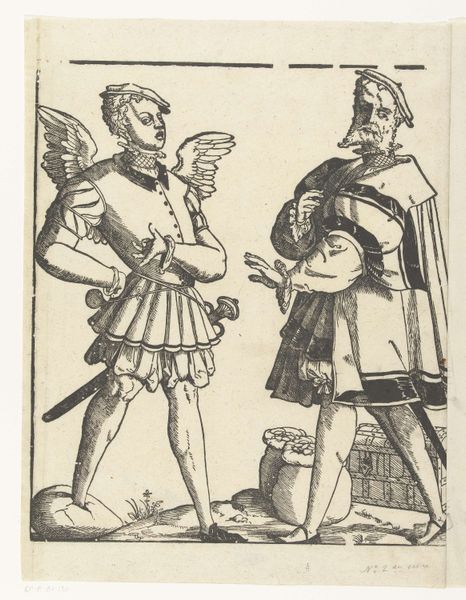
print, paper, woodcut
#
medieval
#
narrative-art
# print
#
figuration
#
paper
#
woodcut
#
genre-painting
Dimensions: height 95 mm, width 73 mm
Copyright: Rijks Museum: Open Domain
Editor: This page, titled "Bladzijde met staande figuren van een kramer en een vrouw" from 1712, is an anonymous woodcut print on paper. The composition feels very balanced despite the slightly crude lines. I'm curious, focusing purely on the visual, what stands out to you? Curator: The interesting thing to me about this piece is the tension between the flatness of the picture plane and the implied volume of the figures. Note the limited tonal range of the woodcut: how does this constrain or, paradoxically, liberate the artist in representing form? Editor: That’s a great observation. The figures do seem almost pressed onto the page, but their clothing has intricate details that hint at depth. It's fascinating how the artist used line to suggest shape without much shading. The male figure seems more dynamic because of his posture. What do you make of the relationship between the two figures based on their gestures and positions? Curator: Notice that the formal relationships take precedence over a naturalistic representation. It’s intriguing how the figures’ contrapposto—however rudimentary—works to activate the space of the print. It provides internal variation and creates a subtle asymmetry which enlivens the whole. This could be read in opposition with the formal constraints of the chosen medium. How do you respond to this idea of a constraint and freedom working together? Editor: I guess that by working with the limits of woodcut, it directs you towards those key details and forms and focuses your eye. I hadn't considered how those limitations could lead to innovation! Curator: Exactly. And hopefully considering elements such as line, composition, and materiality opens new interpretations.
Comments
No comments
Be the first to comment and join the conversation on the ultimate creative platform.

